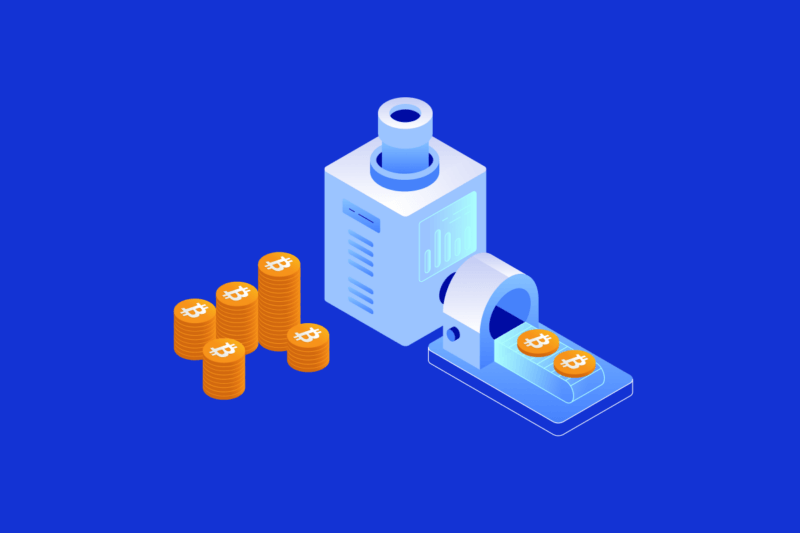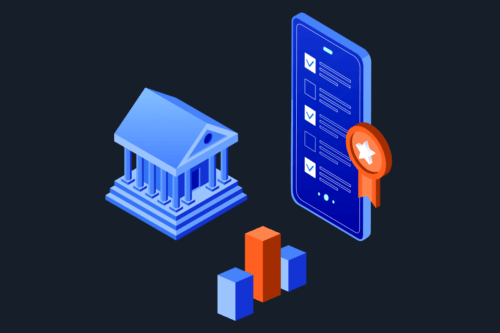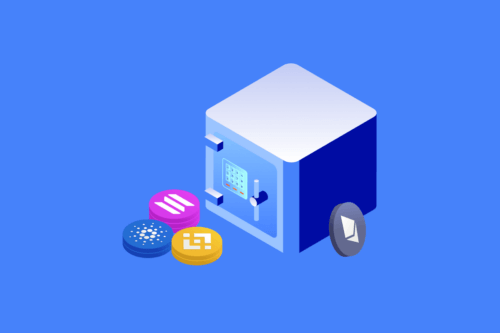
Decentralized finance (DeFi) exploded in popularity at the dawn of the new decade. Close to $50 billion USD worth of assets is locked up in the sector as of 2022. The surge of DeFi products has resulted in mass innovation in blockchain technology, and new use cases for cryptocurrencies are being rapidly discovered.
One such utility is yield farming, a popular money-making tool for experienced crypto investors. In this article, we’ll cover what yield farming is, how it works, the top platforms, and the associated risks.
What is yield farming?
Yield farming is a decentralized finance (DeFi) innovation that involves locking up cryptocurrencies to generate passive rewards. It broadly encompasses staking, lending and liquidity mining. Compared to the traditional use of these earning methods, yield farming involves constantly moving cryptocurrency between platforms to find the best reward rates. These techniques don’t tend to have lockup periods, however, yield farmers that redeem their tokens too early may incur a fee.
Yield farming is most commonly associated with liquidity mining. Liquidity mining leverages automated market maker (AMM) technology, which allows investors to trade cryptocurrencies without the approval of a centralized authority.
For this to work, token holders must provide liquidity to a liquidity pool. Liquidity providers (LPs) are rewarded additional tokens as an incentive for locking up their digital currencies. Yield farming occurs on decentralized exchanges (DEXs), however, some new platforms have been released that will automatically farm on an investor’s behalf.
Did You Know?
Yield farming protocols have been a part of decentralized exchanges for as long as they have existed. However, the money-making method didn’t hit the blockchain mainstream until the release of Compound Finance, an Ethereum-based yield farming platform. Compound’s native token, COMP, became a popular option for yield farmers to generate income and opened the gateway to new, innovative ways for DeFi projects to create liquidity.
What are LP tokens?
Liquidity provider tokens (LP tokens) are cryptocurrency tokens used to represent an investor’s share in a liquidity pool. LP tokens essentially operate as receipts for someone’s contribution to liquidity. These tokens can be redeemed for the cryptocurrencies provided to the pool. Occasionally, LP tokens have value in their own right and can be staked, leading to greater potential yield.
The different types of yield farming
There are three key types of yield farming – staking, lending, and liquidity mining.
Staking
Staking is a method of yield farming where tokens are locked up on a decentralized exchange like PancakeSwap. The relevant blockchain network then uses these locked crypto assets to assist in its consensus mechanism and validate transactions.
Staking only requires one cryptocurrency asset to be locked up. When used as part of a yield farming strategy, investors will exchange their assets between various platforms and cryptocurrencies to find the best staking rewards.
Lending
Lending is a form of yield farming that involves loaning cryptocurrencies to borrowers. The lender will then receive rewards based on the amount of interest and fees a borrower is paying back on the loan. A prominent example of a platform used by yield farmers is Compound finance.
Liquidity mining
Liquidity mining is the most common and also the most complex technique used by yield farmers. It can be broken down into three sections – automated market makers, liquidity providers and liquidity pools.
Automated market makers
When investors trade on a centralized exchange, they use a central limit order book to execute transactions. This order book is like a database that matches buyers with sellers and is controlled by the platform. Conversely, an automated market maker (AMM) does away with this centralized model and instead uses an algorithm to create liquidity. Exchanges built with an AMM utilise smart contracts so that transactions can automatically execute without needing a buyer/seller on the other end.
Liquidity providers
An AMM algorithm won’t work without liquidity providers (LPs). Those who deposit certain tokens into a pool will then be rewarded based on the amount of liquidity they’ve provided. LPs will often be required to provide stablecoins that track the US Dollar, such as USDT, USDC and DAI. Then, the LP will receive a unique “LP token”, which serves as a placeholder for the deposited cryptocurrencies.
Liquidity pools
Liquidity pools are a reserve of multiple cryptocurrencies locked inside a smart contract. Pools are funded by liquidity providers and drawn from whenever a trader executes a transaction on a decentralized exchange. For example, if there was a BTC/USDC pool, an investor could buy BTC using USDC without needing a seller on the other end.
When put together, we can compare yield farming to buying a drink from a vending machine. A vending machine doesn’t have a human behind it to make the transaction – you just put money in and get what you want.
Liquidity providers can be viewed as the machine’s (liquidity pool) snack suppliers. Without any drinks or chocolate (cryptocurrencies), the vending machine won’t work. However, when it’s stocked and people are using it, the snack suppliers will receive a portion of the profits made.
Key Takeaway
The yield farming process follows a fairly basic structure. First, an exchange uses an AMM to allow trading cryptocurrency without a third party. Next, a liquidity provider deposits specific tokens into a liquidity pool, occasionally receiving new LP tokens as placeholders. Whenever a transaction is made in that pool, they will earn a portion of the platform’s fees, paid out in cryptocurrency. Yield farmers often move their tokens between different exchanges to find the best possible rewards rates. Due to this, some yield farming strategies can become extremely complex.
How are yield farming rewards calculated?
Each decentralized exchange using liquidity pools will have a unique method for rewarding liquidity providers. Say an investor deposited liquidity to an ETH/DAI pool. They might receive their return in ETH, or an LP token like ETH-DAI.
Despite the varying reward protocols, most returns from yield farming are annualised. Farmers can see how much they are expected to earn over a year. Reward rates tend to be projected as either an annual percentage rate (APR) or an annual percentage yield (APY). Simply put, an APY accounts for compounding while an APR does not.
It’s important to remember that quoted yield farming rates are only estimations – they are not fixed. There are a few elements that can impact the calculation of an APY. Primarily, the 24 hour trading volume of a cryptocurrency and total liquidity of a coin will affect the potential yield of farming strategies. Network congestion and competition may also play a major role.
Yield farming platforms
Listed below are just some of the many yield farming platforms available in the world of DeFi.
Compound Finance
Compound Finance, which launched in 2018, is one of the longest-running yield farming DeFi platforms. The platform is named such due to automatically compounding deposited tokens, making it one of the more lucrative yield farming options. There are very few restrictions when using Compound – there are no trading fees or minimum deposits on the platform. Yield farming on Compound Finance is achieved by loaning cryptocurrencies to borrowers.
When users lend their tokens on the platform, they receive unique ERC-20 tokens called “cTokens”. These tokens can then be traded independently or re-invested into a pool on the Compound exchange. The Exchange also launched its own governance tokens known as COMP, which can be used to propose, debate and vote on changes made to the exchange.
PancakeSwap
The majority of yield farming platforms are built on top of the Ethereum blockchain. PancakeSwap is noteworthy for being one of the only exchanges to use the Binance Smart Chain. Traders can swap various BSC cryptocurrencies, such as BUSD, BNB and BETH. PancakeSwap also has a comprehensive liquidity mining program. Liquidity providers are rewarded with the DEX’s native BEP-20 token, CAKE. CAKE rewards can then be staked in a “Syrup pool”, increasing the PancakeSwap platform’s earning potential.
Tip
Those with a higher risk appetite can use their CAKE rewards to enter into PancakeSwap’s daily lottery where lucky users can win a large amount of CAKE if their ticket is selected. Any CAKE that isn’t distributed to lottery participants is burned, helping the cryptocurrency avoid becoming over-inflated.
Synthetix
Synthetix is a decentralized exchange aiming to bridge the gap between traditional finance and the blockchain. The platform supports derivatives trading – the exchange of tokenized ERC-20 assets. Investors on the application can swap fiat currencies, stocks, and commodities over the Ethereum network. Trades made using these synthetic tokens incurs a small fee, which is then distributed to liquidity providers. Synthetix offers liquidity mining and staking to yield farmers, as well as the ability to borrow tokens using ETH as collateral.
UniSwap
UniSwap was founded in 2018 and has since grown to become one of the biggest decentralized exchanges in the cryptocurrency sector. UniSwap facilitates the permission-less trading of thousands of ERC-20 tokens and supports liquidity mining. Users can create their own liquidity pools or join one of the hundreds that exist. What’s unique about UniSwap’s system is that LPs can set a target price range when depositing tokens to a pool. By adjusting the price to a point they believe will be popular, they can then yield more rewards. If the real price of the cryptocurrency exceeds (or falls behind) the range, the yield farmer will no longer receive fee payments.
Yield farming risks
Yield farms are a relatively new concept to the DeFi world and still have a few issues that need ironing out. In general, earning a decent profit through providing liquidity requires a comprehensive knowledge of the process, a complex strategy, and high capital. Those without any of the above can easily lose their money due to gas fees, changing reward rates, and swings in the prices of cryptocurrencies. On top of this, there are some specific risks yield farmers must be aware of.
Regulatory risk
DeFi is intended to operate outside the regulation of central authorities like governments. Most decentralized exchanges are yet to feel the pinch of government intervention. However, the growing popularity of yield farming makes it a possible target for an institutional crackdown in the future, which may result in a loss of funds if a platform is shut down for good.
Smart contract hacks
Smart contracts are at the core of DeFi and have ushered in a new way for society to manage their money. However, the code backing smart contracts is still relatively new and can be prone to bugs or exploitation. Smart contract hacks have occurred on various DEXs, resulting in massive cryptocurrency losses.
Impermanent loss
Impermanent loss is a risk unique to yield farming. It is a symptom of cryptocurrency’s inherent volatility and can seriously affect profits when providing liquidity. It occurs when the price of a token changes drastically after being deposited in a pool.
Yield farmers don’t receive a definite number of tokens after providing liquidity – instead, they are given a share of the pool. Let’s say the share is 10%. So, if the price of an asset changes after being contributed, the proportionate share will remain the same (at 10%), but the number of tokens returned will not.
This risk is known as impermanent loss because actual loss only occurs if the liquidity is withdrawn from the pool.
Rug pulls
Rug pulls (or liquidity theft) are one of the more common scams experienced by yield farmers. They mostly occur when developers of a “new project” create a liquidity pool with their token alongside a prominent cryptocurrency such as Ethereum or a stablecoin. The scammers will then lure in liquidity providers by offering an extremely high rewards rate. However, the pool creator will then withdraw the “real” currencies, leaving farmers with a token worth essentially nothing.
Summary
Crypto yield farming is an attractive earning opportunity for experienced blockchain users. By contributing tokens to a liquidity pool, farmers can earn higher reward rates than traditional savings accounts and even staking. However, the process can become complicated and time-consuming before significant profit is realised. There are also several risks associated with yield farming. As the sector continues to grow, some of these problems may be addressed, and this new form of money generation will become a realistic option for most crypto investors.
Quiz
Disclaimer: The information on Swyftx Learn is for general educational purposes only and should not be taken as investment advice, personal recommendation, or an offer of, or solicitation to, buy or sell any assets. It has been prepared without regard to any particular investment objectives or financial situation and does not purport to cover any legal or regulatory requirements. Customers are encouraged to do their own independent research and seek professional advice. Swyftx makes no representation and assumes no liability as to the accuracy or completeness of the content. Any references to past performance are not, and should not be taken as a reliable indicator of future results. Make sure you understand the risks involved in trading before committing any capital. Never risk more than you are prepared to lose. Consider our Terms of Use and Risk Disclosure Statement for more details.


 Article read
Article read




